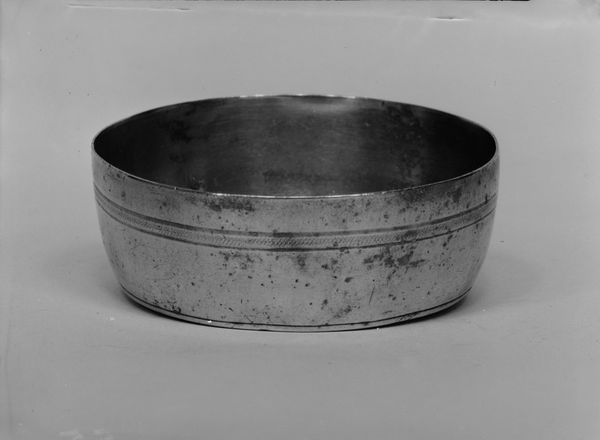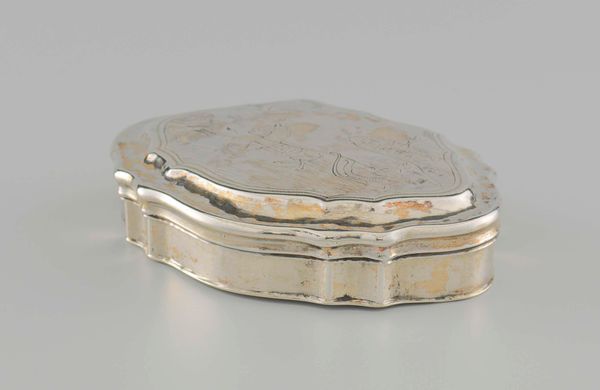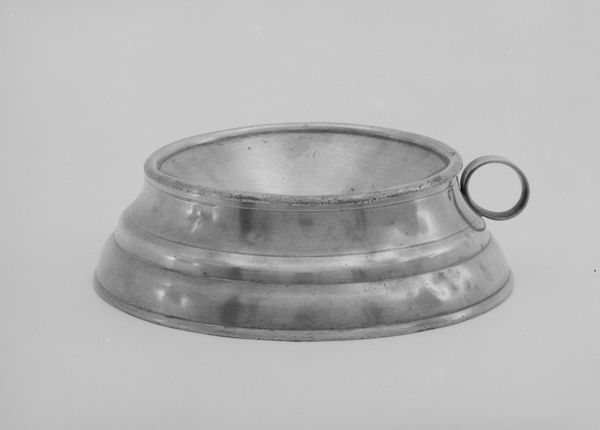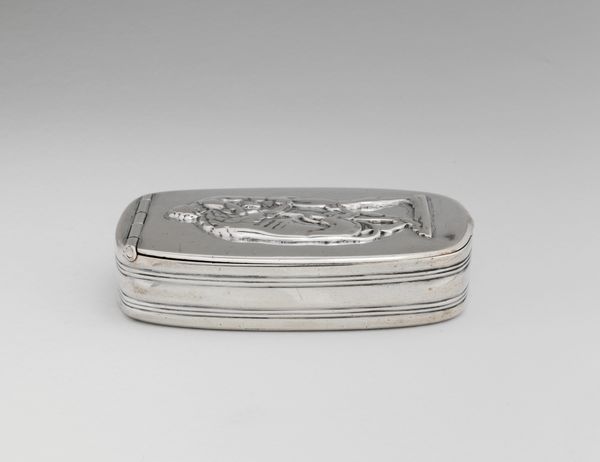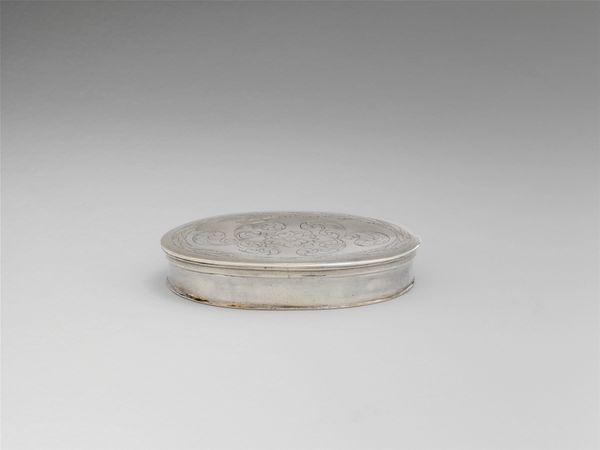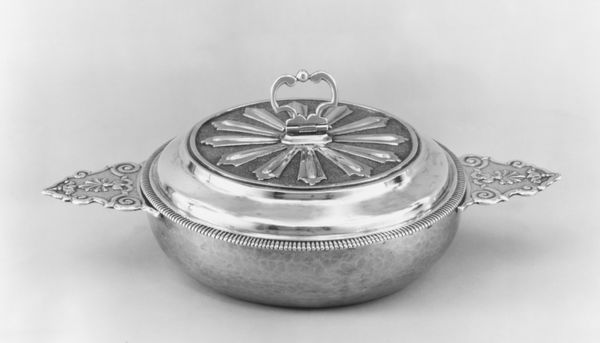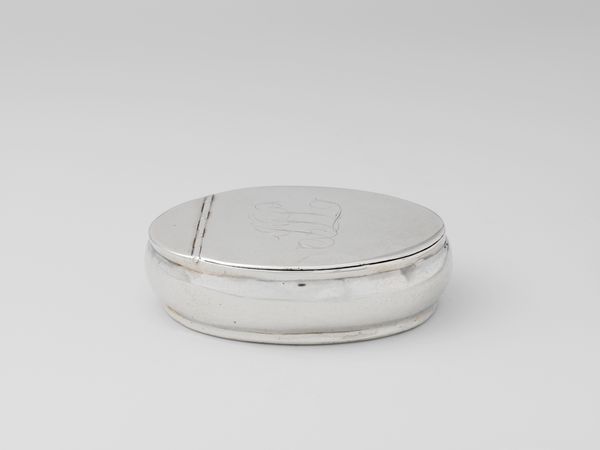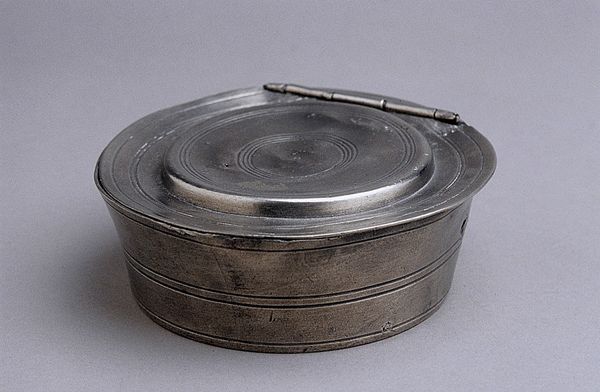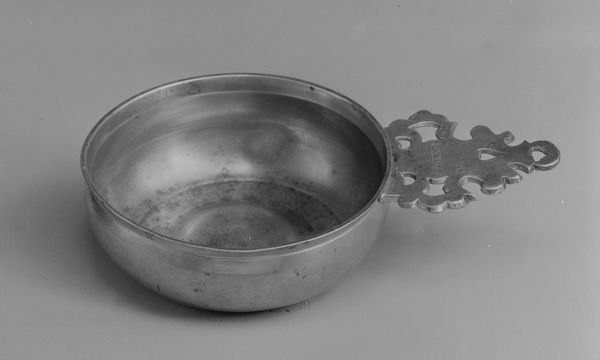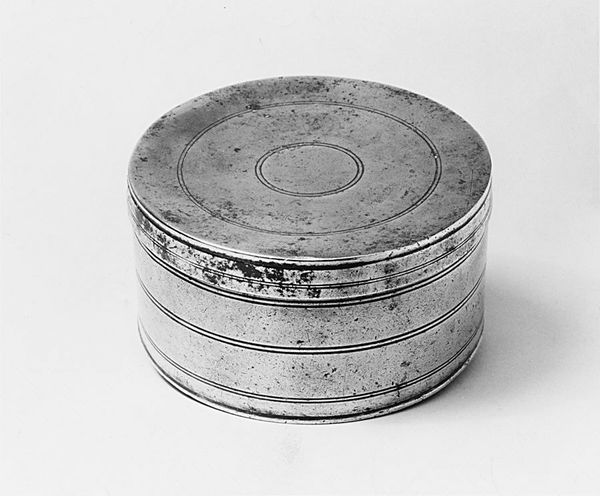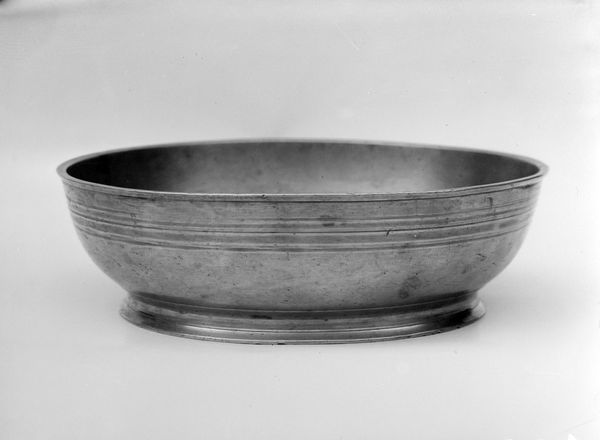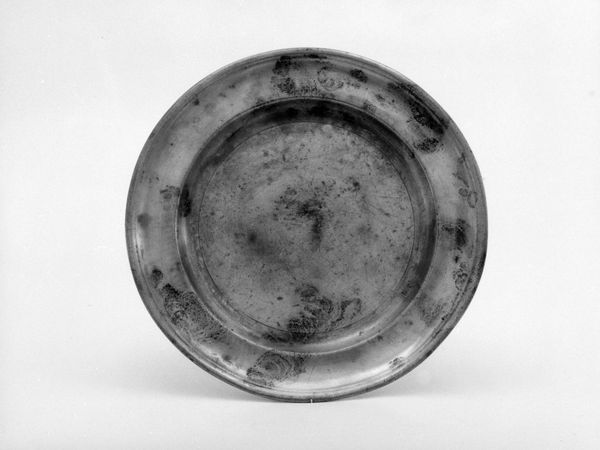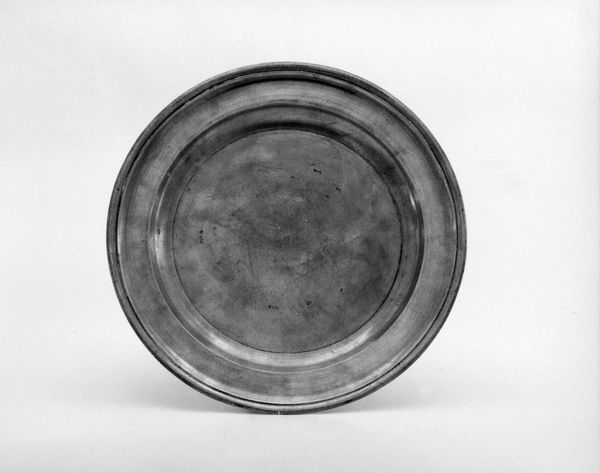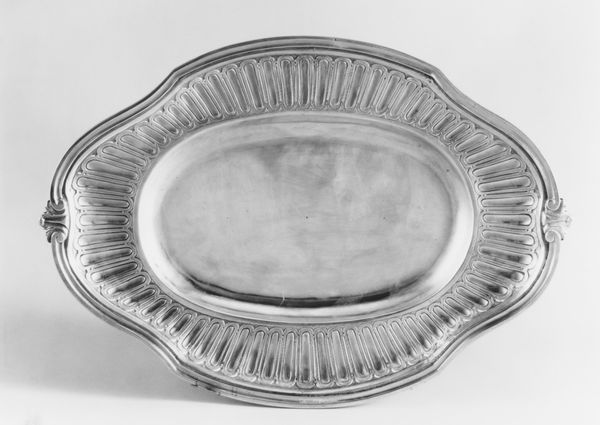
metal, sculpture
#
metal
#
stoneware
#
sculpture
#
united-states
Dimensions: H. 1 1/2 in. (3.8 cm); Diam. 4 1/2 in. (11.4 cm)
Copyright: Public Domain
Curator: Let’s take a look at "Soap Box," a utilitarian object transformed into art. We believe it dates between 1807 and 1835 and comes to us from the skilled hands of Ashbil Griswold. Crafted from metal, it resides here at the Metropolitan Museum. What are your initial thoughts? Editor: Oh, it's got this austere, almost Shaker-like simplicity, doesn’t it? Reminds me of those early American portraits where the sitters were striving for a pure, almost ascetic aesthetic. Utilitarian, you say? More like deeply symbolic! Curator: Precisely! It's not just about hygiene, is it? There is also the circular design with its implied continuity, reinforced with its lid; what images or themes come to your mind? Editor: Well, circles are primordial, of course – the cycles of life, death, and rebirth, certainly. In a culture carving itself from the wilderness, cleanliness wasn't just practical. It was a ritual, a daily cleansing of not just the body, but the spirit as well. Purity of self, aligned to higher purpose, it speaks volumes about its time. Curator: Soap as sacrament! I love that. Think of the contrast—a seemingly mundane object imbued with so much cultural weight. The simple bands etched around the sides and the top, perhaps mimicking the grooves left by a lathe... it speaks to an unadorned honesty, doesn't it? Editor: Absolutely. And it contrasts so sharply with the Rococo flourishes happening over in Europe at the time! It also presents a stark, somewhat romantic, visual vocabulary that comes with building a new nation and a cultural identity around rugged individualism and self-sufficiency. Curator: So, a simple box. Not just a container for soap, but a container of ideals and a monument to daily life. The ordinary rendered extraordinary! Editor: Exactly! It's a quiet revolution. By focusing on the simplicity and necessity of everyday objects, we, like them, are forced to consider their importance and their place in forming personal habits, traditions, or cultures. This ‘Soap Box’ shows just how the plainest vessels contain volumes of unstated truths.
Comments
No comments
Be the first to comment and join the conversation on the ultimate creative platform.
